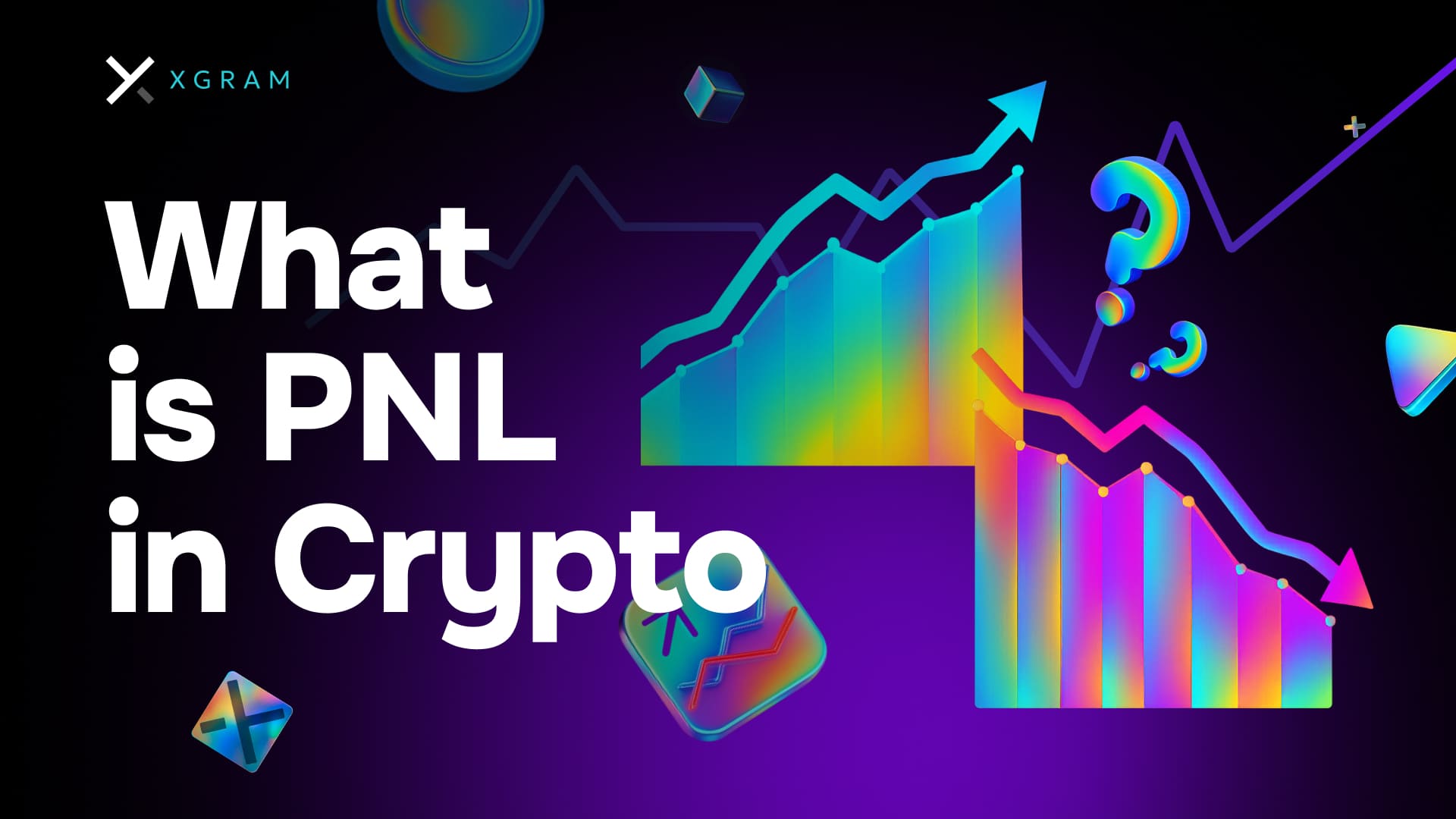TL;DR (Quick Version):
- PNL is the calculation of your gains or losses over time.
- Realized PNL covers your profits or losses after a trade is closed.
- Unrealized PNL is a paper gain or loss that is subject to further price changes.
- You use PNL to monitor your trading performance and refine your strategy.
- Tools like xgram can help you optimize cross-chain swaps and lower fees.
If you want the condensed version: PNL stands for Profit and Loss, the measurement that shows how your trades are doing. It can be split into realized PNL (for completed transactions) and unrealized PNL (for open positions). You get your PNL by taking the difference between your entry amount (cost basis) and your exit amount (or current valuation). Monitoring it helps you see if your investment strategy is working or needs a pivot. In short, PNL is your real-time gauge of success in the crypto market.
Discover what PNL is

You might have heard traders toss around the term PNL without a second thought, but let’s make it clear. PNL is the shorthand for Profit and Loss. Whether you are buying tokens for the first time or you have a crypto portfolio spread across multiple blockchains, PNL is the simple number telling you how your position is faring.
- Profit: The amount you gain if an asset’s current or exit price is higher than your purchase price.
- Loss: The amount you lose if the asset’s current or exit price is lower than what you paid.
PNL is not just a number that sits on a spreadsheet. It is a reflection of your trading approach, risk tolerance, and the decisions you make as the crypto market ebbs and flows. By reading your PNL properly, you can spot when you are on track with your goals and when you might need to make a change.
A quick example
Imagine you purchased 1 ETH for $1,500. If that 1 ETH is now worth $1,800, you are looking at a profit of $300. Conversely, if the price drops to $1,400, you are down $100. That difference is your PNL. It sounds simple, but it becomes crucial to manage it carefully when you have multiple trades open or when the market is swinging wildly.
Understand realized vs. unrealized PNL
Profit and Loss can take different forms depending on whether you have closed your position or not. By grasping these two variations, you will see the difference between actual outcomes and possibilities that may still shift as the market changes.
Realized PNL
Realized PNL shows your confirmed gains or losses once you have exited a trade. For instance, if you bought a coin at $2 and sold at $3, your profit is locked in. There is no risk of losing that profit due to a price shift after the fact. This figure is your actual profit or loss that affects your available capital.Unrealized PNL
Also known as paper profit (or loss), unrealized PNL is hypothetical until you close your position. If you are holding a token that has risen in value but you have not sold it yet, any gains you see are still volatile. Market shifts can pivot your outcome from profit to loss (or vice versa) in a matter of hours, or even minutes. This is why it is crucial to track unrealized PNL—knowing what you stand to gain or lose can influence your next move.
How realized and unrealized interact
Unrealized gains can be converted into realized gains the moment you sell the asset. Similarly, unrealized losses become actual, realized losses if you choose to exit your position when the price is below your original purchase. Balancing the two metrics, while staying aware of any shifts in market conditions, is a big part of managing your overall portfolio risk.
Measure your PNL step by step
Now that you have a clear definition of what is PNL and its two main categories, let’s look at how you might calculate it in practice. Although each platform or exchange might display PNL in different ways, the concept is largely the same.
1. Identify your cost basis
The first step is to nail down your cost basis, which is simply how much you paid for an asset plus any associated fees. For example, if you buy 1 BTC for $30,000 and pay a $50 transaction fee, your cost basis is $30,050. If you use multiple transactions to accumulate a position, total them for your overall average cost.
2. Track the current or selling price
Next, record the current price if you are calculating unrealized PNL or the selling price if you have closed the trade. Keep in mind that fees at the time of selling also add or subtract from the final result. If you sell your 1 BTC for $31,000 and pay a $50 selling fee, your total proceeds are $30,950.
3. Subtract
To find the difference, subtract your cost basis from the final proceeds (or current valuation). In this example:
- Cost basis: $30,050
- Final proceeds: $30,950
- PNL = $30,950 – $30,050 = +$900
That means you have a $900 realized profit if you sold your BTC at that point. For unrealized PNL, you would take the current market price minus your cost basis, and that figure would fluctuate minute by minute.
4. Use tools and spreadsheets
With multiple tokens, trades, and fees, it is easy to lose track. Many exchanges provide built-in PNL trackers, and you can also use third-party portfolio apps. For a more hands-on approach, you can build a spreadsheet that logs:
- Asset name
- Buy (or entry) price
- Fees at purchase
- Current or sell price
- Fees at sale
- Date of purchase and sale
This level of detail not only helps you calculate your PNL but also gives you a bird’s-eye view of your investment patterns over time.
Align your PNL with crypto strategies
Calculating PNL on its own does not do much unless you apply it to your overall trading or investing plan. Here is how to turn PNL into a guiding metric.
Assess performance
Sometimes, you might feel your trades are going well but realize that your PNL is only a small fraction of your capital. By comparing your PNL to your initial investment, you can catch whether you are really hitting your target returns or only nibbling around the edges. This can trigger a deeper look at your trading style—maybe you are too timid, or maybe you are not cutting losses as fast as you should.
Tune your risk management
If you see a pattern of missed triggers, or if your unrealized PNL consistently flips negative, it might be time to adjust your stop losses or alter how much liquidity you keep on hand. A solid risk management plan uses PNL to help you avoid emotional decisions. When you can see in real time what is at stake, you gain more clarity on whether to hold or pivot.
Evaluate new opportunities
Your current PNL also reveals where you might free up capital to explore new crypto opportunities. If you have realized gains, you can choose to reinvest them in fresh projects you have researched. If your PNL is in the red, it might prompt you to double-check whether you should sell at a loss and move on or hold out for a market reversal.
Build long-term habits
PNL data is powerful. By keeping consistent records, you develop discipline and a deeper understanding of market cycles. Over time, you might spot that you do better with short-term trades, or you might find that a buy-and-hold approach fits you best. Either way, your PNL logs provide real-world feedback on what works for you.
Consider Xgram for cross-chain fees
In the crypto world, fees can quickly eat away at your PNL, especially when you are operating across different blockchains. This is where Xgram can save you time and money. Xgram is an exchange-like aggregator that lets you move assets from one chain to another in a streamlined way. It integrates various cross-chain solutions, so you can compare routes and pick the one with the best rates. By showing transparent fees and potential bridging times, Xgram helps you avoid paying more than you need to. Additionally, the interface is user-friendly, making cross-chain transfers less confusing. This efficient approach to cross-chain bridging can keep your PNL healthier because you are not wasting valuable crypto on avoidable expenses.
Dodge frequent PNL mistakes
It is not hard to slip up when trying to track your PNL, and these common pitfalls can distort your perception of how well you are doing. Here is how to stay vigilant and keep an accurate picture.
1. Overlooking transaction fees
Transaction fees may seem small, but they add up fast. Whether it is a staking withdrawal fee, a network fee, or the cost to move tokens from one chain to another, failing to account for these charges can give you an inflated sense of profit. Always factor fees into your PNL formula.
2. Ignoring time frames
The crypto market is famously volatile. If you only look at your PNL once every few weeks, you might miss key windows to lock in profits or cut losses. On the other hand, checking PNL too frequently can lead to panic selling. Aim for a balanced schedule—daily, weekly, or monthly—based on your time horizon and strategy.
3. Mixing personal and trading funds
One route to confusion is using the same wallet or exchange account for both personal expenses and trading. Keep a dedicated wallet or account for investing. When your personal outlays get intertwined with your trading, it muddies the waters of your PNL reporting.
4. Skipping tax implications
The minute you lock in gains (realized PNL), you may have to deal with taxes, depending on your jurisdiction. Taxes can have a significant impact on your net profit. Keep track of your trades and consult the relevant tax guidelines to protect yourself from unwelcome surprises.
5. Using incomplete data
If you have multiple wallets, partial trades, or side deals you did with a friend, failing to sync all these details leads to inaccurate results. A single missing cost basis or missed transaction can tilt your entire PNL calculation. Centralize your data and verify that every buy, sell, and transfer is on record.
FAQ: your top questions answered
Newcomers often have similar questions about PNL. Here are five answers that should clarify things further.
Is PNL the same as ROI?
Not exactly. ROI (Return on Investment) measures your return in percentage terms relative to your initial investment. PNL can be represented in currency terms (dollars, for instance) or as a percentage. ROI is a ratio, whereas PNL is your absolute profit or loss. You might say: “My ROI this month is 10%,” while your PNL might be “I earned $200 in profit.”How often should I check my PNL?
It depends on your trading style. If you are day trading, you might check it multiple times a day. If you are a long-term investor, weekly or monthly checks could suffice. Just be mindful of emotional triggers—frequent checks might cause you to overreact to market volatility, while infrequent checks can lead you to miss strategic points to trade.Do I need special software to track PNL?
Not necessarily. Many people use spreadsheets to record entries, exits, and fees. However, several portfolio tracking tools and exchange dashboards offer real-time PNL. If you want to scale your trading or hold many different tokens, specialized tools might save you time and reduce errors.Why is unrealized PNL important?
Unrealized PNL helps you see the potential gains or losses on your open positions. While you only lock in those outcomes when you sell, tracking unrealized PNL signals good or bad market momentum. It helps you decide whether to close out or hang on when volatility strikes.Can PNL go negative on a good project?
Yes. Even strong projects can see steep dips, causing temporary paper losses. For instance, if you bought a token at a peak and the market corrects afterward, your unrealized PNL might be negative. The quality of the project does not shield you from short-term market volatility. Always make decisions based on fundamentals, technical signals, and your tolerance for risk.
When you consistently track PNL, you gain a key metric that reveals your trading performance and directs your next steps. You learn to interpret the signals behind realized and unrealized gains, and you take more ownership of your crypto journey. Combine that with tools such as xgram to optimize cross-chain trading, and you will save yourself from the slow drip of fees that can erode your profits. Finally, avoiding frequent mistakes—like ignoring fees or not synchronizing your data—brings you closer to an accurate snapshot of your progress.
Keep your PNL front and center. When used effectively, it is your compass for everything from day-to-day trades to longer-term investments. By staying aware of your profits and losses, you better position yourself to act decisively, pivot quickly, and play the market rather than letting the market play you.




